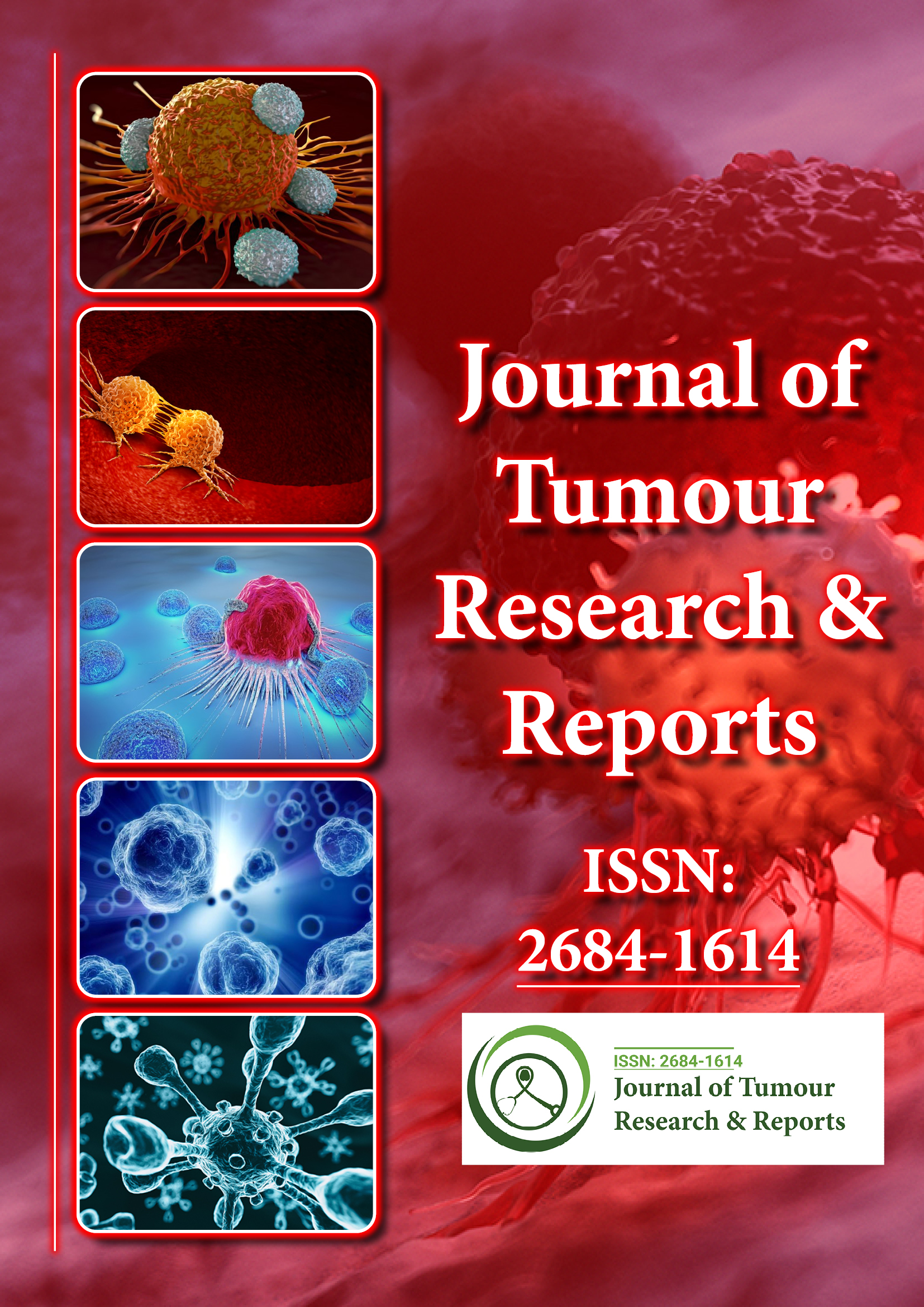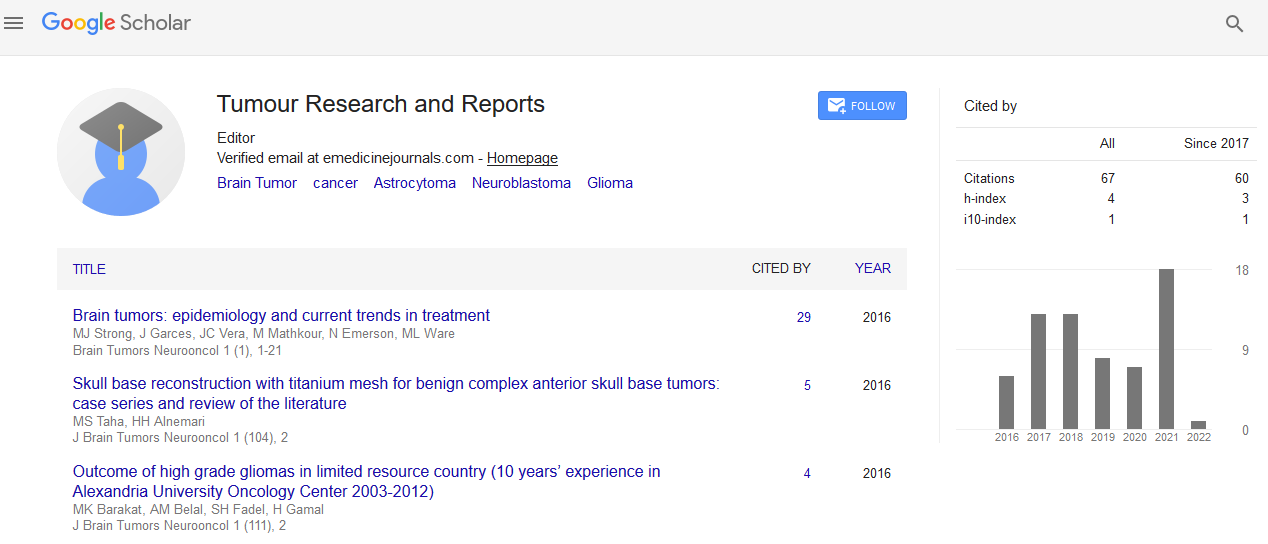Indexed In
- RefSeek
- Hamdard University
- EBSCO A-Z
- Google Scholar
Useful Links
Share This Page
Journal Flyer

Open Access Journals
- Agri and Aquaculture
- Biochemistry
- Bioinformatics & Systems Biology
- Business & Management
- Chemistry
- Clinical Sciences
- Engineering
- Food & Nutrition
- General Science
- Genetics & Molecular Biology
- Immunology & Microbiology
- Medical Sciences
- Neuroscience & Psychology
- Nursing & Health Care
- Pharmaceutical Sciences
Opinion Article - (2025) Volume 10, Issue 2
Angiogenesis in Tumours: Building the Highways of Malignancy
Jonathan Smith*Received: 30-May-2025 Editor assigned: 02-Jun-2025 Reviewed: 16-Jun-2025 Revised: 23-Jun-2025 Published: 30-Jun-2025, DOI: 10.35248/2684-1614.25.10.260
Description
Angiogenesis, the formation of new blood vessels from preexisting vasculature, is a fundamental process in both health and disease. In cancer, angiogenesis becomes hijacked to support tumour growth and metastasis. By ensuring a continuous supply of oxygen and nutrients, while also providing a route for dissemination, angiogenesis acts as the lifeline of malignancy. The study of tumour angiogenesis has revealed not only the molecular mechanisms that drive vessel formation but also therapeutic opportunities to disrupt this process. Yet, the complexity and adaptability of angiogenesis mean that targeting it remains a challenge in oncology.
Subsequent research confirmed that cancer cells secrete proangiogenic factors, tipping the balance of normal vascular regulation. Vascular Endothelial Growth Factor (VEGF) emerged as the central mediator, stimulating endothelial cell proliferation, migration, and survival. Hypoxia within expanding tumours drives VEGF expression through hypoxia-inducible factors, linking angiogenesis directly to tumour metabolism.
The vasculature produced in tumours is abnormal compared to normal tissue. Tumour vessels are often tortuous, leaky, and disorganized, resulting in heterogeneous blood flow. While this irregularity contributes to hypoxia and therapy resistance, it also reflects the chaotic signaling environment of tumours. Other growth factors, such as fibroblast growth factor, platelet-derived growth factor, and angiopoietins, add layers of complexity by influencing vessel maturation and stability. The interplay between these signals creates a dynamic vascular network tailored to tumour needs.
Therapeutically, anti-angiogenic strategies aim to starve tumours by cutting off their blood supply. Bevacizumab, a monoclonal antibody against VEGF, was among the first such drugs to reach the clinic. Tyrosine kinase inhibitors targeting VEGF receptors, such as sunitinib and sorafenib, have also shown efficacy. These therapies demonstrate that disrupting angiogenesis can slow tumour growth and improve outcomes in certain cancers. However, their impact is often transient, as tumours adapt by activating alternative pathways or co-opting existing vessels. Resistance to anti-angiogenic therapy remains a major challenge.
Interestingly, anti-angiogenic therapy can also normalize tumour vasculature rather than destroy it outright. By restoring balance between pro- and anti-angiogenic signals, vessels become less leaky and more organized, improving oxygenation and drug delivery. This concept of vascular normalization has gained traction as a strategy to enhance the effectiveness of chemotherapy, radiation, and immunotherapy. Clinical trials are exploring optimal dosing and timing to achieve this effect, underscoring the nuanced role of angiogenesis in therapy.
Angiogenesis also plays a critical role in metastasis. Tumour cells exploit leaky vessels to enter the circulation, while pre-metastatic niches are primed by pro-angiogenic signals. Platelets, endothelial cells, and bone marrow-derived cells collaborate to support metastatic colonization. Inhibiting angiogenesis may therefore not only limit primary tumour growth but also reduce metastatic spread. However, evidence suggests that some anti-angiogenic therapies may inadvertently increase invasiveness by exacerbating hypoxia, highlighting the need for careful design.
Future directions in angiogenesis research include targeting non-VEGF pathways, exploring metabolic regulation of endothelial cells, and integrating immunotherapy. Endothelial cells within tumours display unique metabolic and immunological characteristics that may be exploited. For instance, manipulating endothelial cell metabolism could impair their ability to support angiogenesis, while modulating their interactions with immune cells could enhance anti-tumour immunity. Advances in single-cell sequencing and imaging are revealing the heterogeneity of tumour vasculature, guiding more precise interventions.
In conclusion, angiogenesis is both a driver and a target in cancer. Its role as the highway of malignancy underscores the importance of blood vessels in sustaining and disseminating tumours. While therapies that target angiogenesis have achieved notable successes, their limitations remind us of the adaptability of cancer. By refining our understanding of the molecular and cellular mechanisms involved, and by integrating anti-angiogenic strategies with other modalities, oncology can better exploit this vulnerability. Angiogenesis remains a cornerstone of cancer biology, a process whose duality reflects both the ingenuity of life and the destructiveness of disease.
Citation: Smith J (2025). Angiogenesis in Tumours: Building the Highways of Malignancy. J Tum Res Reports. 10:260.
Copyright: © 2025 Smith J. This is an open-access article distributed under the terms of the Creative Commons Attribution License, which permits unrestricted use, distribution, and reproduction in any medium, provided the original author and source are credited.

